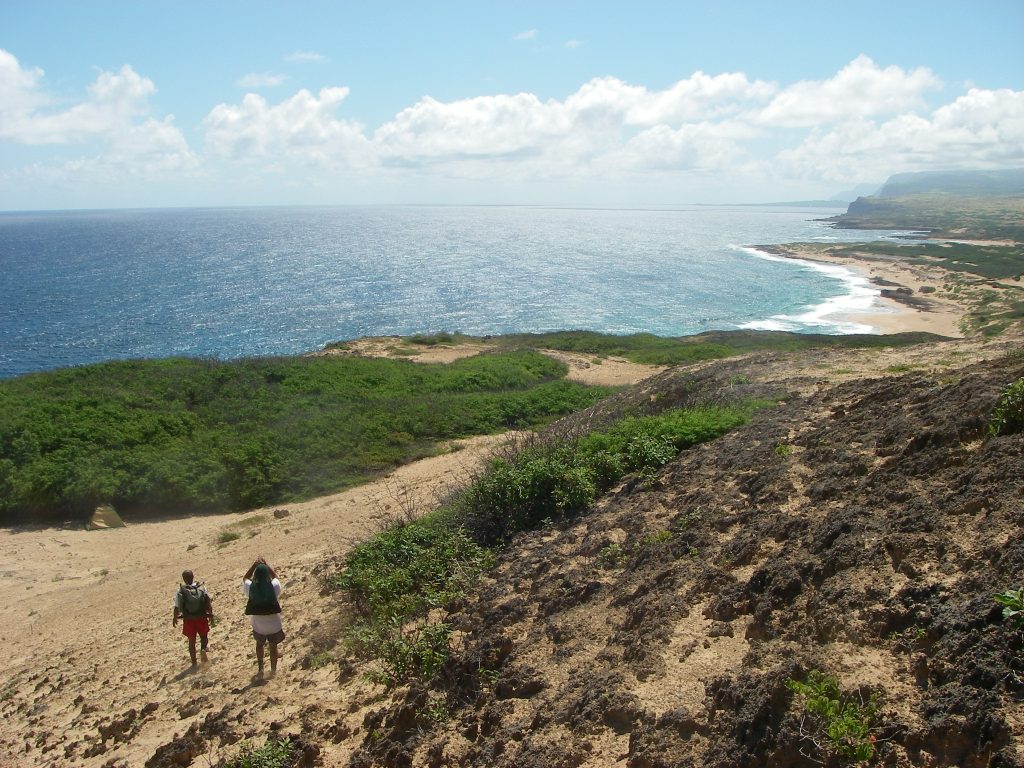Report Highlights Subsistence Fishing on Native Hawaiian Health

Moʻomomi, Molokaʻi. Photo courtesy: The Kohala Center.
A new report has been released by The Kohala Center, addressing the importance of subsistence fishing on Native Hawaiian health in the Moʻomomi area of Molokaʻi.
The results were compiled as part of a recent health impact assessment, demonstrating the positive health effects of the approval of the Moʻomomi Community-Based Subsistence Fishing Area on Molokaʻi for Native Hawaiians living in the area.
“It’s important to view all of Hawaiʻi’s policy decisions through the lens of health, including consideration of individual and family well-being along with the health of the environment and the preservation of culture,” said Dr. Kamanamaikalani Beamer, president and CEO of The Kohala Center. “In this HIA of the Moʻomomi CBSFA we’re pleased to contribute to a thoughtful discussion of how to best manage our resources to the benefit of current and future generations.”
Hawaiʻi state law provides pathways for island communities to co-manage culturally significant and ecologically vulnerable nearshore fisheries in collaboration with the Department of Land and Natural Resources.
A task force report commissioned in 1994 recommended that the Moʻomomi fishery area along the northwest coast of Molokaʻi serve as a demonstration area, in which fishing activities would be managed by the Hoʻolehua Homestead community primarily for subsistence rather than commercial use.
HIA is a tool designed to provide decision-makers with information to help them evaluate the potential effects of policy decisions by considering determinants of health and well-being. The assessment indicates that the Hawaiʻi Board of Land and Natural Resources’ approval of CBSFA regulations for Moʻomomi could enhance family and community well-being if there were a clear co-management strategy and adequate resources for CBSFA implementation.
Findings demonstrate that the positive effects of supporting the use and teaching of Native Hawaiian resource management could help sustain the health of Moʻomomi’s nearshore environment, improve community food security by assuring the availability of fish over time, and strengthen social connections through traditional ways of sharing subsistence catch.
Findings also suggest that proposed Mo‘omomi CBSFA limitations will not substantially affect income generated from commercial fishing.
- The HIA recommends:Continuing education to promote understanding of and support for timely CBSFA regulations;
- Enhancing the development of Mo‘omomi as a focal point for the study and teaching of traditional Native Hawaiian marine management practices, along with the use of contemporary scientific methods to assist in documenting the long-term results of those practices;
- Emphasizing the value of traditional Hawaiian foods in conjunction with subsistence fishing and plant cultivation.The HIA was conducted by The Kohala Center in partnership with Sust‘āinable Molokai, and researchers from the University of Hawai‘i at Mānoa and the University of California, Davis.
- This health impact assessment was supported by a grant from the Health Impact Project, a collaboration of the Robert Wood Johnson Foundation and The Pew Charitable Trusts.
- An executive summary and the full report are available on The Kohala Center’s website.










